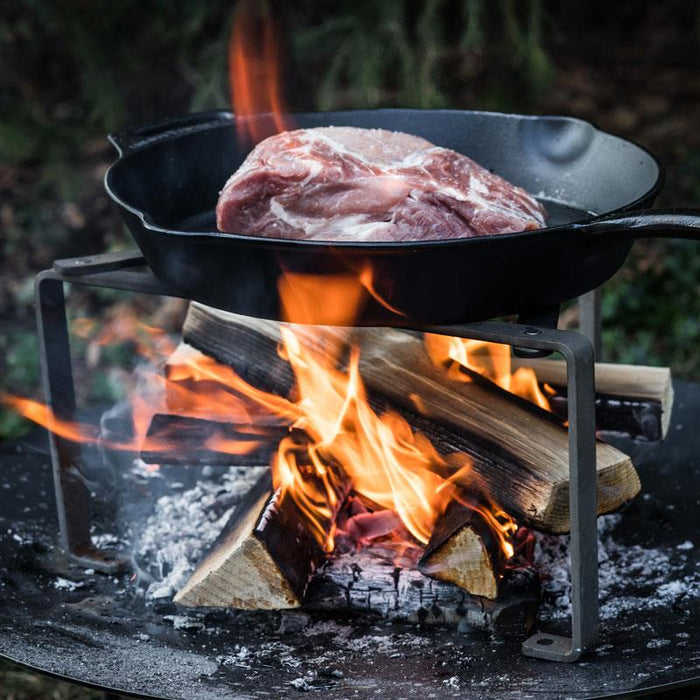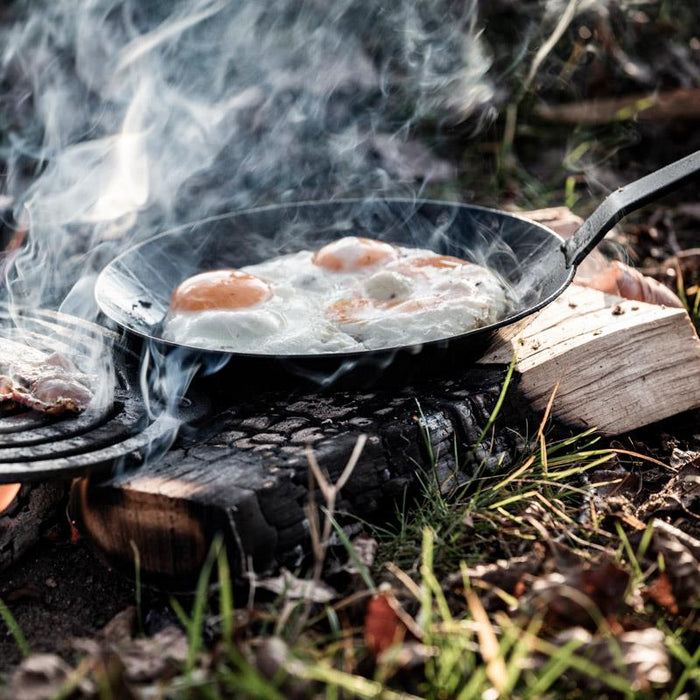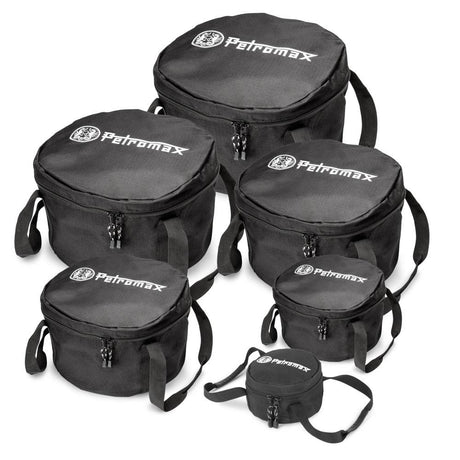
Überwintern in Portugal mit dem Wohnmobil – Tipps, Routen und die besten Campingplätze
Entdecke die besten Plätze, Routen und Tipps für ein unvergessliches Überwintern mit dem Wohnmobil in Portugal.
Rated 4.9/5 ⭐️ | Free shipping from 79€ 🚚
Can be used on all hobs
Non-stick effect, without artificial coating
Versatile in use
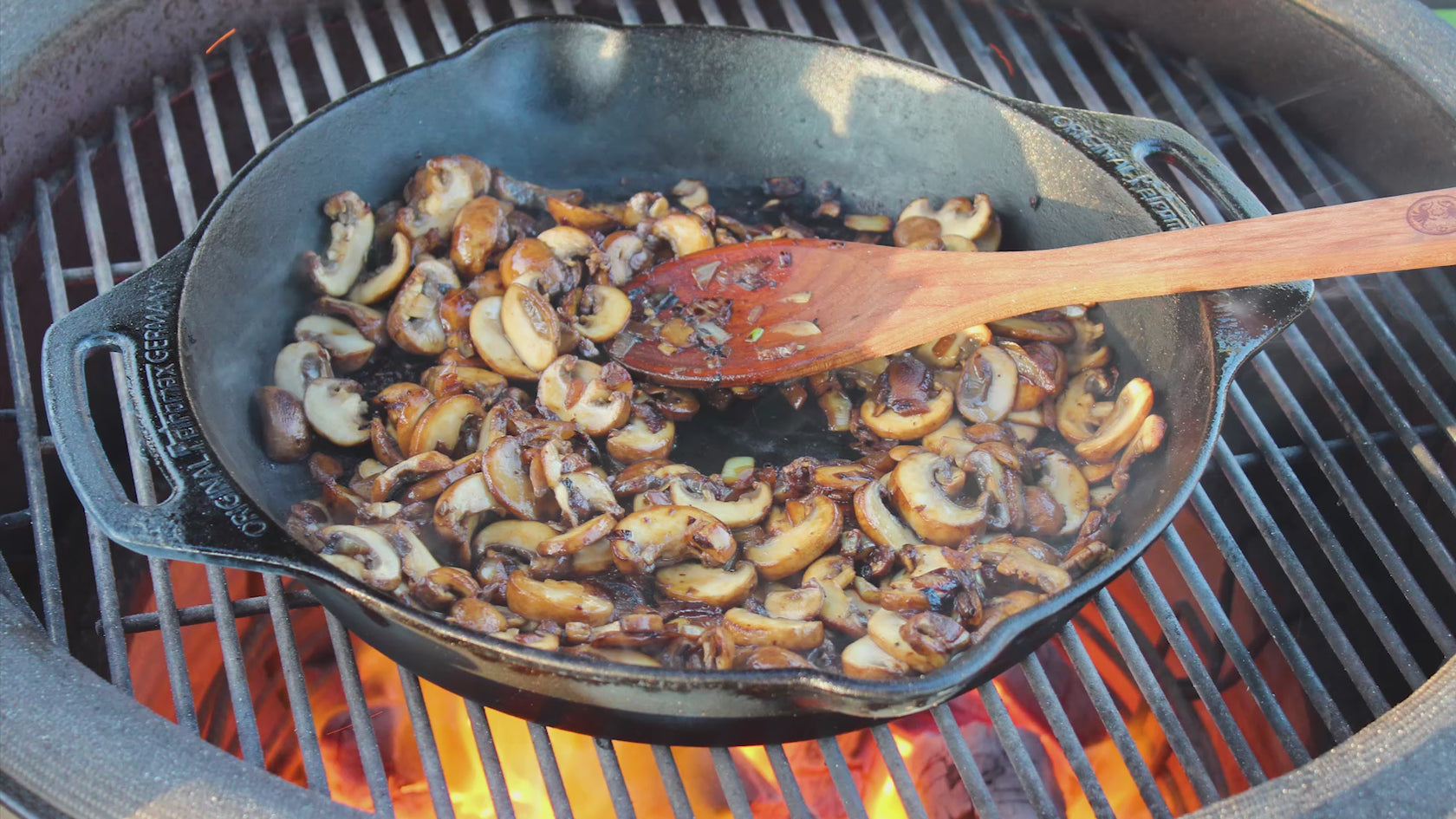

Set of two high-quality cast-iron fire pans in freely selectable sizes from 15-40 cm. With pre-treated surface, ready for immediate use, universal use on all hobs and around the campfire. Perfect heat distribution with a natural non-stick effect.
Fire skillet with one pan handle Starter Set
Fire skillet with handle 2x set
Aramid handle cover fire pan 2x
Fire Skillet handle starter set
Mini fire pan with handles 2x set
Wooden handle Wrought iron pan 2x
Rocket stove & wrought iron pan 24cm
(35)
Schmiedeeisenpfanne & Griff Set - Black Friday 2025
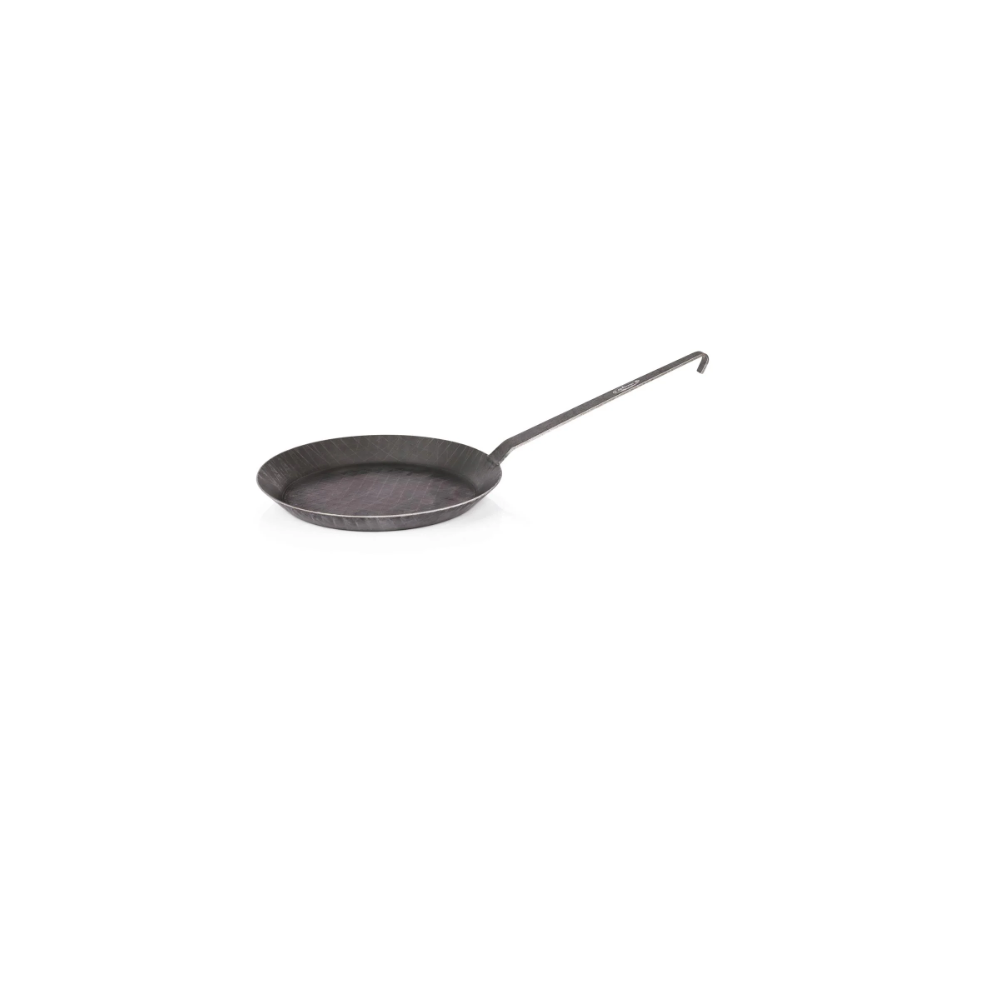
Double set of two high-quality wrought iron pans in freely selectable sizes (20-30 cm). Made in Germany, extremely heat-resistant with a natural non-stick effect thanks to the patina. With extra-long handles and hooks, suitable for all types of stoves and open fires.
Cast iron panshave been a classic in the kitchen for generations and impress with their robustness and excellent heat distribution.
The advantages at a glance:
Wrought iron pans are the lighter alternative to cast iron pans and offer a high degree of flexibility in the kitchen.
The advantages at a glance:
Weight: Lighter & easier to handle
Wall thickness: Thinner walls
Heat distribution: heats up quickly & also cools down faster; less heat storage
Flexibility: Flexible use, as lighter and thinner-walled
Price: Often slightly more expensive than cast iron pans
Both cast iron and wrought iron pans are robust and durable kitchen utensils that can last a lifetime if cared for properly. However, they differ in some important characteristics that influence their suitability for certain cooking techniques.
Choosing the right pan depends on your personal preferences and cooking habits. If you like to braise and fry and value a constant heat, a cast iron pan is the best choice. If you prefer a light and versatile pan for different cooking techniques, a wrought iron pan is recommended.
Choosing the right pan depends very much on what you want to cook. Each pan has its own strengths and is particularly suitable for certain dishes.
Here is an overview of the most common types of pans and their areas of application:
In short: The best pan for you depends on your personal preferences, your cooking skills and the dishes you prefer to prepare.
Coated pans are known above all for their Non-stick properties known. This makes cooking and cleaning much easier. Nothing sticks and you don't need less fat or oil. This is not only practical, but can also lead to healthier dishes.
But what about uncoated pans, such as cast iron or wrought iron? Although these pans do not have an artificial coating, over time they develop a natural patina. This patina is created by burning in oil and fat and also has a non-stick effect.
Why is the natural patina so special?
If you value natural materials, durability and a special taste, cast iron or wrought iron pans are an excellent choice.
Important: No matter which pan you choose, regular care is important in any case. For coated pans, you should follow the manufacturer's instructions to avoid damaging the coating. With cast iron and wrought iron pans, you should regularly refresh the patina by oiling the pan after use.
You can find instructions on how to bake your cast iron pan here.
You can find instructions on how to bake your iron pan here.
No, unfortunately you can't use every pan on every hob.
The compatibility of a pan with a particular cooking surface depends primarily on the base material of the pan. Here are the most important cooking surfaces and the pan materials suitable for them:
To enjoy your pans for a long time and cook safely, you should always make sure that the pan and hob are compatible.
When buying a new pan, there are a few important aspects to consider so that you can enjoy your new cooking companion for a long time:
1. material:
2. size and shape:
3. floor:
4th handle:
5. weight:
6. coating:
7. care:
The best pan for you depends on your individual needs and preferences. By taking the above points into account, you are sure to find the perfect pan for you.

Entdecke die besten Plätze, Routen und Tipps für ein unvergessliches Überwintern mit dem Wohnmobil in Portugal.

Die besten Petromax Produkte als Geschenkideen für Outdoor-Fans – plus ein Erlebnis, das wirklich begeistert.

Discover how to take impressive photos in winter despite the cold, snow and frost with simple, practical tips.

Ready for winter camping? How to get your motorhome ready for snow, frost and cozy nights in the warmth.

Discover how easy cooking over the fire can be: 5 sure-fire Dutch Oven recipes to get you started with fire...

Cold? No problem! How to stay warm in winter with the onion principle and the best tips for outdoors.

From pumpkin light to hot soup - discover how to use pumpkin cleverly, prepare it and enjoy it over the...

Ready for snow? We'll give you creative ideas for winter activities that will entice you out even in cold weather.
* Promotions valid for selected and marked items on https://petromax.de and in the Petromax Adventure World Magdeburg from 21.11. to 01.12.2025 23:59 CET. Only while stocks last. Private end customers of legal age will receive a discount on participating items in stock or immediately available online in the amount of the included German VAT rate that would apply to the marked price. Individual bundles and promotional products may be excluded from the VAT reduction. reduction. Only the marked final price of the product in the shopping cart applies. The VAT share corresponds to a discount of 15.966% of the respective purchase price and is also granted on 7% VAT. articles. Books are excluded from the promotion. The discount is already indicated online on the product by a strike price and a label at the top left of the
article image. Subject to change without notice. Purchase only in normal household quantities.
BORN IN THE WILDERNESS
